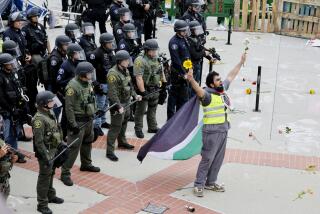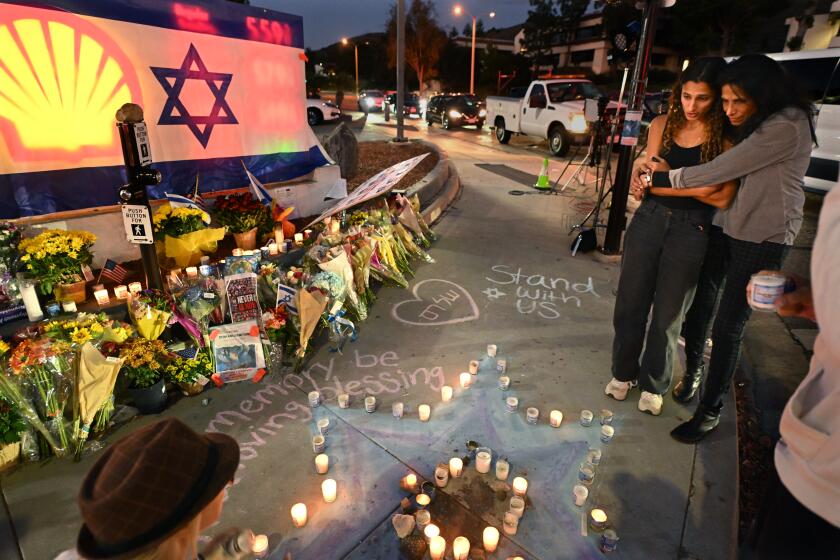Simulated Emergencies Measure Mettle of Search and Rescue Dogs
Tammy, a black lab, scurried onto the vast gray pile of broken slabs of concrete and asphalt on Sunday, deftly searching for trapped victims. Five minutes later, she found the first person buried but alive. Three minutes later she found a second person and her handler called the search off.
Success, although it was not a real emergency. This was a test in a Sun Valley landfill for the state Office of Emergency Services.
Tammy was being evaluated for recertification as an urban search and rescue dog. The California canine search-and-rescue units are part of eight state task forces that respond to emergencies such as building collapses.
Tammy seemed to just be having a good time. In fact, her incentive for finding buried victims was to play with her toy as a reward. “For her, it’s hide and seek,” said Tammy’s handler, Sergio Morariu, a canine search specialist from the Fremont Fire Department. “If there’s a possibility to win, she’ll go” and search for the victim.
Certification for dogs is required every two years, and this is Tammy’s second experience with the process. The careers of rescue dogs last between five and 10 years, depending on their size and ability.
Over the weekend, 18 dogs from across the country, including California, New Mexico and Florida, were evaluated. Of the 10 tested on the basic level -- the lowest skill level, which includes an obedience test -- five passed. On the advanced level, which evaluates searching skills, three of eight passed. Those numbers are considered good, fire officials said.
“The dogs are our best tools for detectability” in a disaster situation, said Los Angeles Fire Department Capt. Tom Haus. The evaluations are important to make sure dogs have the necessary energy and are not afraid of the possible conditions they might encounter in a real emergency. Also, their must have a keen sense of smell. The debris piles used in the tests include diversions, such as live chickens, food or clothing, which the dogs should not mistake for humans.
On Sunday, the dogs were tested in three settings, including the pile of broken concrete. Another pile was made up of discarded sets from Warner Bros. and Paramount studios, and a third was made up of sets and plant waste.
Tammy was sliding down walls from the set of the television series “Frasier.” She had to find at least five of six volunteers buried in the three piles in order to pass. The dogs are allowed one false find.
Landfills are popular sites for such testing because they can simulate conditions found in real emergencies. Federal, state and local funds are allotted for the test, which is conducted four times a year in California.
Materials used in the piles where people are buried are hard to come by, which makes training and testing challenging, said Len Chesmore, assistant chief of the fire and rescue branch of the Office of Emergency Services. When training for the test, most handlers use local recycling and waste sites.
“It’s hard to get realistic scenarios,” Chesmore said, though the landfill will often stockpile waste specifically for the tests.
Occasionally, training can be conducted in buildings headed for the wrecking ball.
Rowley, an 18-month-old yellow lab, had his first evaluation Sunday.
Unlike some of the handlers -- who are associated with fire or police departments -- his owner, Carol Herse, is a civilian. She trains him once a week. The rest of the week, she runs a nursery in Santa Cruz. She is part of a state task force, and could be called on in an emergency situation. In fact, she took a dog, Rowley’s mother, to the World Trade Center disaster site in 2001. She doesn’t get paid for her work, though the state did pay for Rowley’s testing. But don’t call it a hobby.
“It’s a profession,” Herse said. “It’s just an unpaid one.”
More to Read
Start your day right
Sign up for Essential California for news, features and recommendations from the L.A. Times and beyond in your inbox six days a week.
You may occasionally receive promotional content from the Los Angeles Times.






